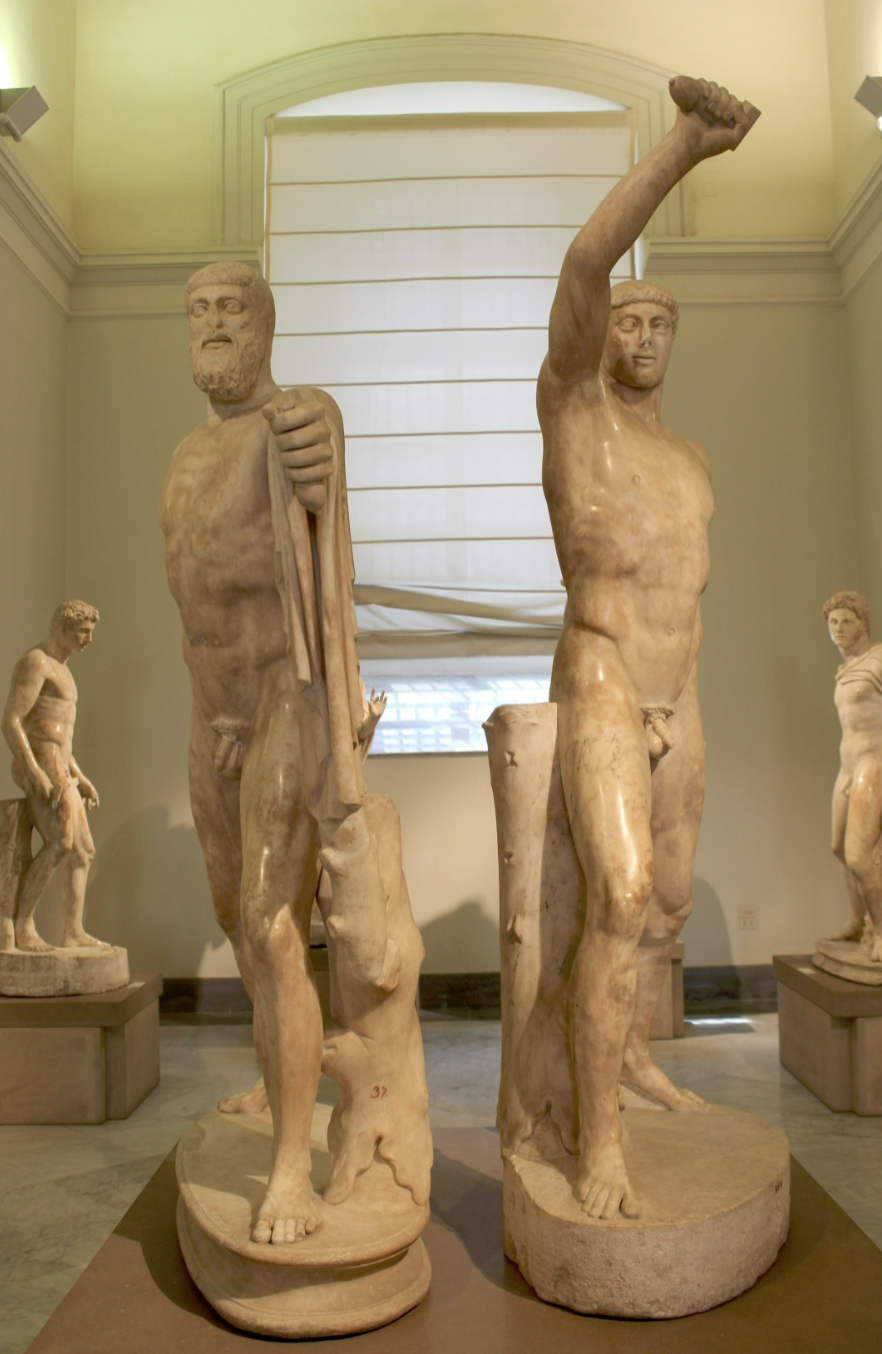Lecture 6 - ALEXANDER IN MESOPOTAMIA AND IRAN
1/3
There's no tags or description
Looks like no tags are added yet.
Name | Mastery | Learn | Test | Matching | Spaced |
|---|
No study sessions yet.
4 Terms

What is this?
Who are the figures depicted in the image?
Who made the statues?
When was this sculpted?
Who was this returned to? When?
What is the story behind this statue?
Roman marble copy of bronze statue group
Aristogeiton (on left)
Harmodius (on right)
Sculptor - Kritios, Athenian sculptor
Sculpted in 477/476 BCE
Stolen by Xerxes in 480 BCE, returned by Alexander the Great in 330 BCE
Story:
Athenian tyrant Hippias made romantic advances on Harmodius. Harmodius and Aristogeiton wanted to kill Hippias and his brother, Hipparchus, the tyrants. They only killed Hipparchus. Harmodius and Aristogeiton were killed.
They were lovers, and considered national heroes
What does Alexander do to Bessus after he declares himself king?
Alexander pursues Bessus and Persian supporters
tracks them to Sogdiana (modern-day Afghanistan)
Alexander has Bessus mutilated (nose/ears) and killed
significance of mutilation:
it was a persian royal punishment